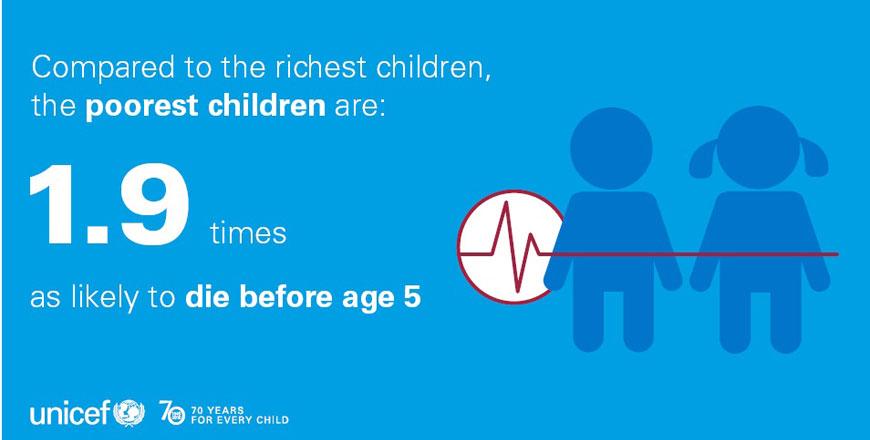You are here
Under-five mortality rates higher in Jordan’s urban areas — report
By Khetam Malkawi - May 06,2015 - Last updated at May 06,2015
AMMAN — Jordan ranked 100th among 179 world countries in the 2015 Mothers’ Index and Country Rankings issued by Save the Children, which determines the best and worst countries to be a mother.
According to the organisation’s 16th annual State of the World’s Mothers study released recently, Jordan ranked 10th among countries of the regions along with Iraq, while Saudi Arabia ranked first and 38th among world countries, followed by the UAE, which ranked 47th internationally and Bahrain came 3rd and 49th among world countries.
Norway led the ranking, feted as the best country where a mother can live, followed by Finland and Iceland.
Somalia ranked 179 as the worst place for mothers, according to the study, and was preceded by the Democratic Republic of Congo.
Every day, 17,000 children die before reaching their fifth birthday, the report said, adding that these preventable deaths are increasingly occurring in city slums, where overcrowding and poor sanitation exist alongside skyscrapers and shopping malls.
The report finds that in most developing countries, the poorest urban children are at least twice as likely to die as the richest urban children.
In some countries, they are three to five times — or even more — likely to die.
The annual Mothers’ Index uses the latest data on women’s and children’s health, educational attainment, economic well-being and female political participation.
In Jordan, Haiti and Tanzania, under-five mortality rates are higher in urban areas than they are in rural areas, though in general, the risk of death before reaching the age of five is higher in rural areas than in urban areas of developing countries, the report said.
The final results of the Kingdom’s “Population and Family Health Survey” for the year 2012, which were issued in late 2013, revealed that infant and under-five mortality rates in the past five years before the Save the Children report stood at 17 and 21 deaths per 1,000 live births, respectively.
The national survey indicated that there was a drop in infant mortality over the past 23 years.
“Under-five mortality declined by 46 per cent — from 39 deaths per 1,000 live births in 1990 to 21 deaths per 1,000 live births in 2012.”
The under-five mortality rate was higher in the southern region (26 per 1,000) than in the northern region (19 per 1,000) and the central region (20 deaths per 1,000), according to the survey.
Children living in refugee camps are also more likely to die young, with under-five mortality at 33 per 1,000 births in camps compared with 20 per 1,000 outside camps.
Meanwhile, the neonatal mortality rate stood at 14 deaths per 1,000 live births, which is “three-and-a-half times the post-neonatal rate”.
According to Sawsan Majali, secretary general of the Higher Population Council, figures in international reports are sometimes based on estimates and not “actual” figures.
She noted that there are no national figures showing the different rates of infant mortality in urban and rural areas in the Kingdom, but in general “health services provided for mothers in the country are good.”
However, Majali said Jordan might not achieve the fourth Millennium Development Goal that calls for reducing the under-five mortality rate by two-thirds between 1990 and 2015.
The Save the Children report showed that the under-five mortality rate per 1,000 live births in Jordan is 18.7.
The final post-2015 framework should include an explicit commitment to equitably ending preventable child and maternal deaths with measurable targets, the report said.
“This framework will determine the future of mothers’ and children’s lives around the world... the post-2015 framework needs to highlight investments needed for basic health services, water and sanitation, and improved nutrition for this under-served, and often neglected, population,” the report added.
Related Articles
AMMAN — Jordan ranks 96th in the world for under-five mortality, considered a critical indicator of the well-being of children, according to
AMMAN — The average birth rate per woman in Jordan dropped from 5.6 births in 1990 to 2.7 in 2018, the Department of Statistics' (DoS) 2017-
Almost 91 per cent of Jordanian children between the ages of two and four are subjected to violent discipline, according to a report issued late Tuesday.

Opinion
Apr 09, 2025
Apr 08, 2025
- Popular
- Rated
- Commented
Apr 08, 2025
Apr 09, 2025
Newsletter
Get top stories and blog posts emailed to you each day.
















